Issue 29 of TRACCE Online Rock Art Bulletin is dedicated to the research history of Mt. Bego, from its early “discovery” to the end of the 19th century, with the exception of Clarence Bicknell’s work. Two key points should be emphasized: the relationship with the development of paleethnology and the significance of British “cup-and-rings” studies. All early Mt. Bego authors virtually contribute to this issue since their papers are “served” online, not only as PDF files, but also as “flip-books”, giving in this way importance to sources and online e-book sharing since they provide a useful tool to all researchers interested in rock art studies, especially in this area of the Alps.
by Andrea Arcà (Footsteps of Man – IIPP)
Mount Bego, XIX century research history
The Mt. Bego petroglyphic complex, on the French-Italian border, and its sandstone natural rocky blackboards represent, together with Valcamonica, one of the two Alpine rock art poles. After the already published papers, regarding the Valcamonica-Mt. Bego relations and Barocelli’s role, this special issue of TRACCE Online Rock Art Bulletin (21 March 2013, special “equinox” issue) is entirely dedicated to the beginning of the research study in this area. All main papers published from 1821 to 1901, as from the first written news to the academic and scientific “discoveries”, are being re-published for public domain use.
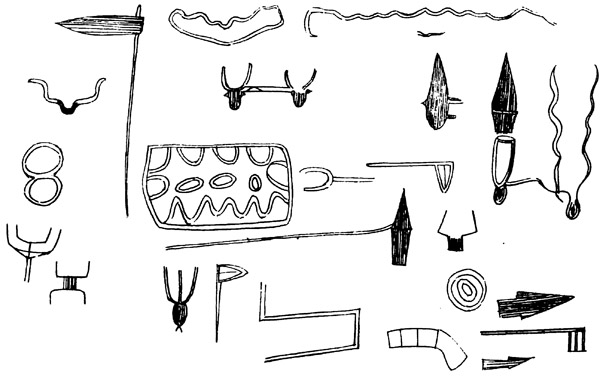
From Moggridge 1869, table IV of the engraved Mt. Bego figures, for the first time copied and published (drawings by M. Dieck, a Prussian naturalist and a near relative of Count Bismarck)
All early authors virtually participate with their works to this TRACCE issue: Pietro Gioffredo (1660~, 1839), François-Emmanuel Foderé (1821), Matthew Moggridge (1869), Leon Clugnet (1877), M. Henry (1877), Edmond Blanc (1878), Émile Rivière (1879), Serafino Navello (1884), Filippo Prato (1884), Felice Ghigliotti (1884), Emanuele Celesia (1886) and Arturo Issel (1901).
The analysis of these papers, namely the oldest ones, often cited but rarely consulted and even less frequently evaluated, may well contribute to not only enhance the historical depth of rock art studies, but to also explain the evolution of the recording methods and how to better plan future researches.
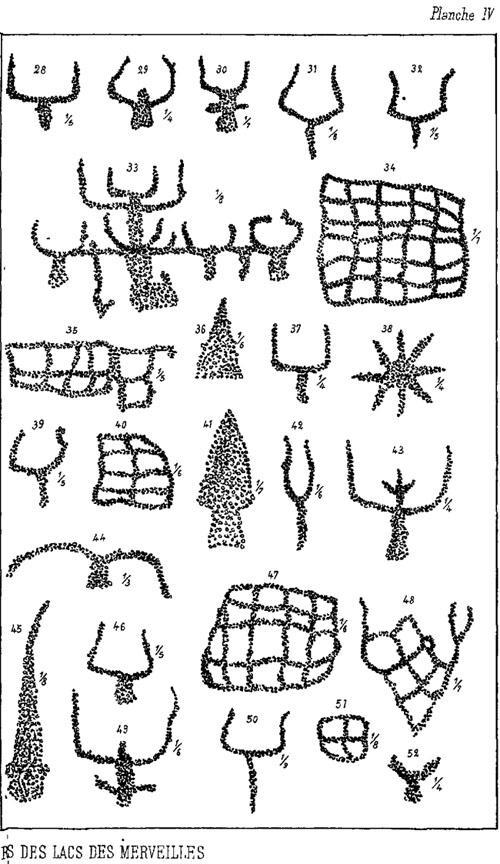
Clugnet 1877, planche IV, partie droite,
Clarence Bicknell’s contributions, published from 1897 to 1913, are not purposely included here since much greater space and attention should be reserved to the great work of the English botanist, who in terms of research studies on this iconographic complex must be considered the first and, together with Piero Barocelli and Henry de Lumley, one the three most important scholars of all-time.
As regards the Alpine arch, Mt. Bego’s engraved rocks were the first to be cited (Gioffredo 1660~, 1839, Foderé 1821) and studied (Moggridge 1869). Only one year later (Keller 1870), also the cup-marked stones began to be published, first in Switzerland, and then in France (1880) and Italy (1881).
Regarding the first steps in Alpine rock art studies, two key points should be outlined: the clear relationship with the development of paleethnology, for which the second part of the 19th century was like a golden age, and the importance of British studies, derived from megalithic interests, particularly devoted to cup-and-rings petroglyphs. Indeed, the spark of Mt. Bego’s academic studies may have been set off by their common membership of the London Geological Society. In fact, both George Tate – who in 1865 published a detailed and very well illustrated book on Northumberland engraved stones with cup-and-rings patterns – and Matthew Moggridge, the first to publish in 1869 the reproductions of Mt. Bego’s engraved figures, were F.G.S., i.e. “Fellows of the Geological Society”, as indicated by the acronym after their names.
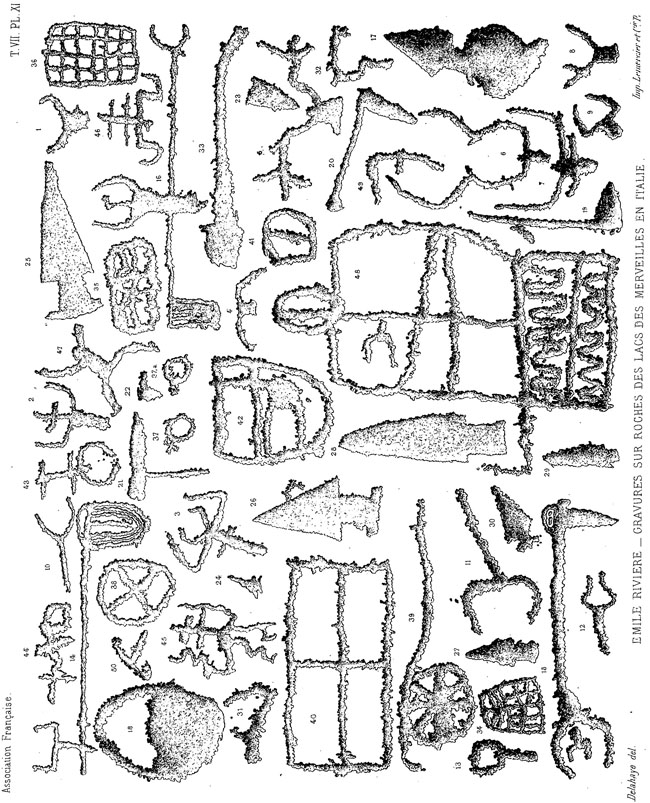
Émile Rivière, Gravures sur roches des lacs des Merveilles en Italie T. VII. PL. XIX.
[editor’s note: reproductions are very accurate, tracing with extreme precision the contour of the pecked figures;
panthograph was utilised to achieve this result]
Although at the time, and until 1947, Mt. Bego belonged to Piedmont and to Italian territory, related studies were for the first fifteen years an entirely English-French concern. This situation was only partially redeemed in 1886, with the academic discovery of the engraved area of Fontanalba (Celesia 1886), and in 1901, by the long paper published by Arturo Issel, which was however largely based, for the iconographic part, on Bicknell’s works. Later, it was Piero Barocelli who took the baton of Bicknell’s research and represented the Italian Archaeological Superintendence. In 1921, with his first detailed paper, Italian scientific research provided an essential contribution, by setting an accurate archaeological frame, such that the role of rupestrian archeology pioneer should be awarded to Barocelli (Arcà 2012). It should be noted that academic and archaeological research started in the other Alpine rock art pole, namely Valcamonica, only fifty years later, in having the largest engraved areas only been discovered during the 1930-31 winter (Battaglia, Marro).
A third aspect, related to the importance of graphical recording methods, should be considered as it is not possible to publish an engraved or painted rock without having seen it or without any iconographic support. Indeed, the first Mt. Bego academic papers include more or less accurate plates of drawings, seeing that photography was not at the time available for printed books. This kind of documentation is very important for research history as it shows from the very beginning the co-presence of different methods ranging from sketches (Moggridge, Clugnet, Celesia) to rubbings (Issel), and from squeezes (Rivière, Blanc) to transparency tracings. All these reproduction methods can be considered as derived from epigraphists and antiquarians recording experiences, and already applied since a long-time before. These techniques are clearly identified by Texier in 1851, who cites the “estampage à la manière noire” (rubbing), the “estampage à la manière blanche” (squeeze) and, finally, the “calque”, which is the contact transparency tracing.
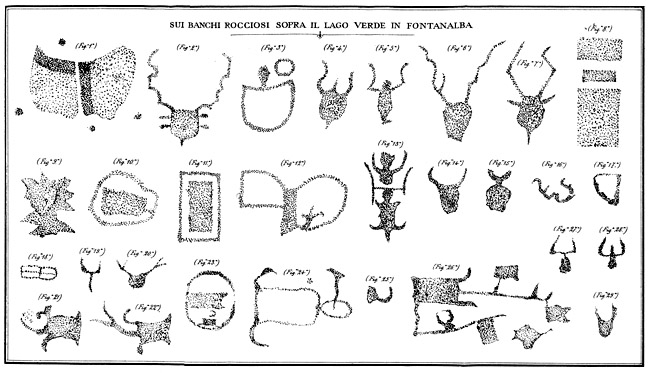
Figure incise sui banchi rocciosi sopra il lago Verde in Fontanalba
Finally, a few words must be spent on the importance of free online e-books sharing (e-papers in this case) and of public domain. A thorough examination of the sources is the base of every scientific path: their complete accessibility, thanks also to Gallica-BnF and Google-books digitalization projects, can represent a great step for further research development. All papers “served” online with this TRACCE issue are not only available as PDF files, which can be downloaded and/or printed, but also as flip-books, which offer the possibility of being browsed as a real book and directly searched online. In this way, the TRACCE editors, in the hope that the seeds we have sawn will be taken up, provide a useful tool to all researchers interested in rock art studies, particularly in the Alpine area.
Andrea Arcà
TRACCE Online Rock Art Bulletin editor
Mt. Bego’s early papers
| .. | Gioffredo P., 1839 [~1660]. Storia delle Alpi Marittime, corografia, libro I, in Storia delle Alpi Marittime di Pietro Gioffredo libri XXVI, Torino, capo XIII, pp. 93-95 (p. 47 in altra edizione). The first written news of the Laghi delle Meraviglie (Marvels Lakes) – Mt. Bego – engraved rocks, printed edition (1839) of a manuscript compiled around 1660, based on a late 16th century relation. |
| .. | Foderé F. E., 1821. Voyage aux Alpes Maritimes, ou histoire naturelle, agraire, civile et médicale, du comté de Nice et pays limitrophes, enrichi de notes de comparaison avec d’autres contrées, Paris, pp. 18-19. In this book it is possible to read the first few lines, regarding Mt. Bego’s rock carvings, in French. Dans ce livre on peut lire la première mention imprimée en Français sur les gravures rupestres du Mont Bego. |
| .. | Moggridge M. 1869. The Meraviglie, in International Congress of prehistoric Archaeology, transactions of the Third Session, London, 359-362, 5 plates. This paper marking the scientific discovery of Mt. Bego’s petroglyphic complex – one of the two Alpine rock art poles – is due to an English botanist, member of the Italian Alpine Club. |
| .. | Clugnet L., 1877. Sculptures préhistoriques situées sur les bords du lacs des Merveilles (au sud-est du col de Tende, Italie), Matériaux pour l’histoire primitive et naturelle de l’Homme, 13e année, 2e série, tome VIII, Toulouse, pp. 379-387, 4 pl. h.t. (III, IV, V et VI). In this paper, the first French work, the author, a librarian from Lyon, supports the idea that the engravings were made by shepherds or hunters; detailed plates. |
| .. | Henry [M.] 1877. Une excursion aux Lacs des Merveilles près Saint-Dalmas-de-Tende. Ancien glacier métamorphosé en monument Carthaginois, Annales de la Société des lettres, science et arts des Alpes-Maritimes, t. IV, pp. 185-205. The author thinks that the Mt. Bego engravings are natural rocks marking made by the glaciers; no scholar agreed with him. |
| .. | Blanc E., 1878. Étude sur les sculptures préhistoriques du Val d’Enfer près des Lacs des Merveilles, Mémoires de la Société des Sciences Naturelles & Historiques des Lettres et des Beaux-arts de Cannes et de l’Arrondissement de Grasse, Tome VII, 1877-1878, pp. 72-87, 1 pl. h.t. In this paper, the author, a librarian from Nice, supports the idea that the engravings were the result of the cult of some malevolent deity, terrifying generator of lightning and thunder. |
| .. | Rivière E., 1879. Gravures sur roches des lacs des Merveilles au val d’Enfer (Italie), in Association française pour l’avancement des sciences, Paris, pp. 783-793, I tav. This paper better details the French scientific discovery of Mt. Bego’s petroglyphic complex and it is due to the physician and archaeologist Émile Rivière, devoted to the study of the Palaeolithic. |
| .. | Navello S. 1884. Iscrizioni simboliche preistoriche dei laghi delle meraviglie nelle Alpi Marittime, Memoria Navello, pp. 16-21, 2 tavv. The first Italian detailed paper, presented to the Alpine Club’s congress, “translates” the contents expressed by L. Clugnet as well as re-drawing his plates. |
| .. | Prato A. F. 1884. Sulle iscrizioni simboliche del Lago delle Meraviglie, Rivista Alpina Italiana, Periodico mensile del Club Alpino Italiano, 9, 30 settembre 1884, pp. 97-98. In this short paper, published in the Italian Alpine Club review, the author suggests that the Marvels Lakes engravings where made to celebrate hunters with their preys, who died in this area. |
| .. | Ghigliotti F., 1884. Alpi Marittime, Escursioni ai monti, in Atti del XVI Congresso degli alpinisti italiani in Brescia dal 20 al 25 Agosto 1883, Bollettino del Club Alpino Italiano, 1884, pp. 225-261. Here an accurate report of a mountaineering ascent to the Mt. Bego summit, with a visit to the rock engravings and the first mention of the well-known Latin inscription “Hoc qui scripsit…” |
| .. | Celesia E., 1886. Escursioni alpine, I. – I laghi delle Meraviglie, II. – Fontanalba, estratto dal Bollettino ufficiale del Ministero di pubblica istruzione, fasc. V°, maggio 1886, 27 pp., 4 tavv. Here the discovery of the Fontanalba area, 68 figures in two plates. The first Italian academic paper on Mt. Bego’s engravings, due to the literatus E. Celesia, who suggests that the engravings were made by the Phoenicians. |
| .. | Issel A. 1901. Le rupi scolpite nelle alte valli delle Alpi Marittime, Bullettino di paletnologia italiana, s. III, t. VII, a. XXVII, nn. 10-12, 1901, pp. 218-259. The most detailed paper until that time on Mt. Bego’s engravings; Issel never recorded the engraved rocks, but attentively examined the literature and was in close and friendly contact with C. Bicknell. |

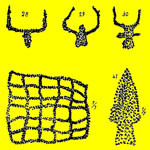

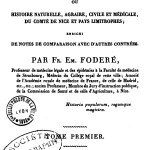
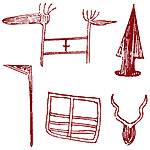
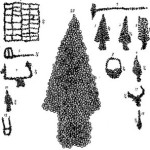
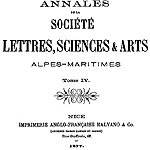
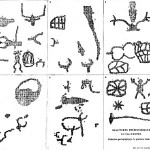
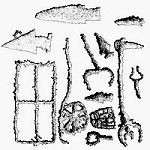
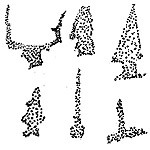
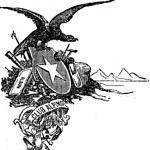
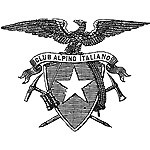

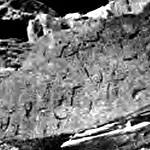
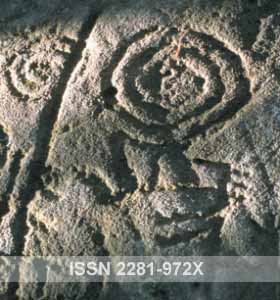












This study and format is simply brilliant – human homerun!
I analyze Eastern Oregon Rock art (USA) and I could only wonder what rock art in Europe looked like. Thank you for SHaring!
I post my rock art photos as Portland’s Oregon Nature Examiner – if any one would like to check out images here.